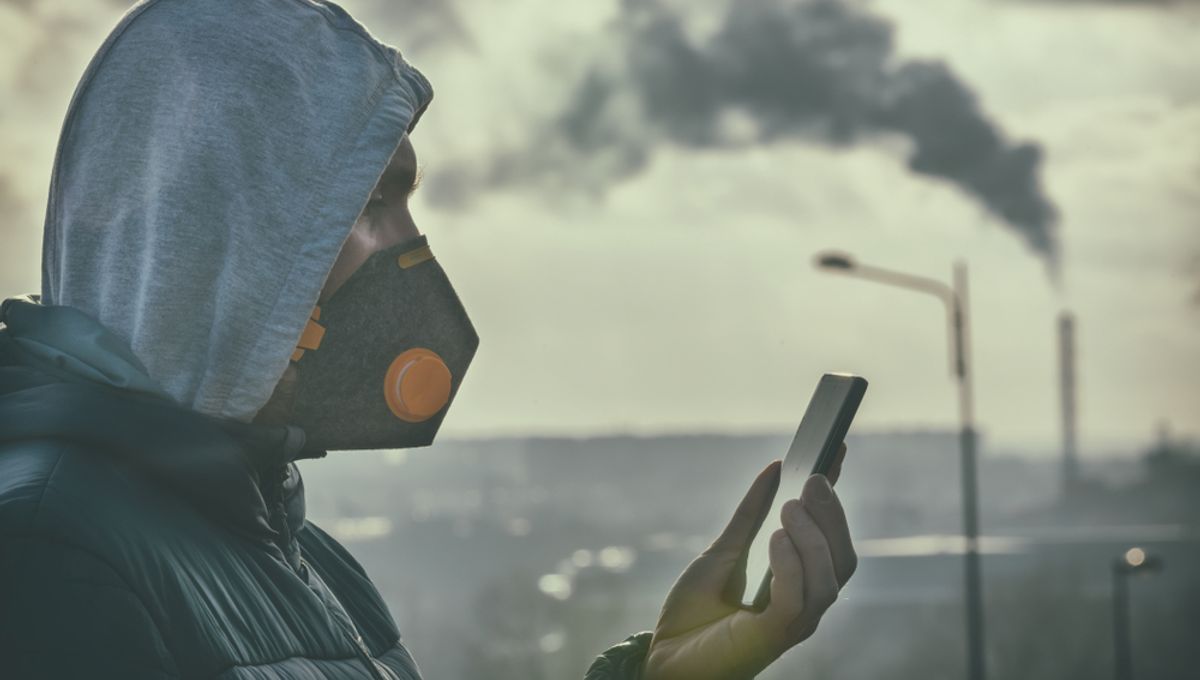
In 2008, Beijing had some of the worst air pollution in the world. The city’s US embassy acquired a monitor capable of giving up-to-the-minute information on the concentration of ozone and PM2.5 particulates in the air. Then, it started doing something that seems small – but, if one study is right, turned out to be world-changing in a way no one noticed until now.
The embassy started tweeting the particle readings every hour at @BeijingAir, providing current information about the safety of venturing outside to staff and residents of the city.
Whether this was done to help embassy staff and US citizens, as a service to the Chinese public, or as a flex on a more polluted rival, we may never know. However, in a new paper, Dr Akshaya Jhan of Carnegie Mellon University and Dr Andrea La Nauze of the University of Queensland make some very big claims about its impact.
The Beijing data proved so popular that the US adopted the same approach in 50 other cities with serious air pollution problems and more than 300 million inhabitants, but only those with American diplomatic services. Some local governments copied the approach, installing their own hourly monitoring devices, but not all were as transparent in reporting the results, perhaps because they didn’t want the findings to damage their image.
According to Jhan and La Nauze, cities with US embassy/consulate monitors have since made much more rapid progress in fighting pollution than those without. The result has been a truly immense divergence in the damage done by particulates.
The reduced pollution means that in the median monitored city, 303 fewer people die of pollution-related diseases yearly within 10 kilometers (6.2 miles) of the monitoring station than in comparable cities without the same monitoring, Jhan and La Nauze report. The authors are economists and use standard formulae for years of life lost to translate this to an annual benefit of $127 million a year for a median city.
La Nauze told IFLScience that this underestimates the benefits since it doesn’t include the cost of, “The cognitive effects of pollution”, non-lethal ill-health, or the consequences for agriculture downwind. It also doesn’t allow for people buying air filters or staying indoors when they see the pollution is particularly bad, or even consider the effects of ozone. It also assumes no deaths prevented in cities’ outer suburbs.
Yet, even using these conservative assumptions, the benefit to the countries hosting the monitors now approaches 20 percent of the US aid budget.
The paper doesn’t even consider the global benefits of reduced carbon pollution.
It’s not all altruism by the US either – the state department pays danger money to employees working in cities more polluted than American counterparts. These are now falling, along with sick days from breathing in all that muck, quickly returning the cost of installing the $75,000 monitors.
La Nauze acknowledged to IFLScience the study; “Is not a randomized control trial”, so it is hard to prove the monitors are the cause of the subsequent improvement. Most monitors are in capital cities, and it’s possible nations with serious pollution problems are tackling the issue in their capitals before applying the same benefits to other cities.
However, the authors do provide two pieces of evidence to support the case that this is a case where correlation does imply causation. “We looked at pretrends,” La Nuaze said. In the 5 years before a particular city received its monitor pollution showed no improvement, on average, compared to cities that are yet to be monitored. Improvements began two years after installation, continuing since.
Moreover, Google searches for terms like “air quality” shot up in cities with monitors. The authors suggest a newly worried public brought pressure to bear on governments. La Nauze told IFLScience that their sample was not big enough to compare the effect in democratic cities with those in authoritarian states.
La Nauze told IFLScience; “There is growing interest in the role of information in environmental programs.” Having shown just how powerful such information can be, wider applications may be found.
The paper is published in Proceedings of the National Academy of Science
Source Link: How Live-Tweeting Air Pollution Data Is Saving Lives